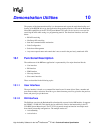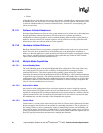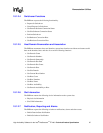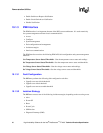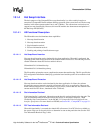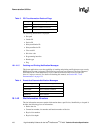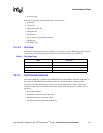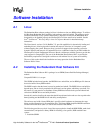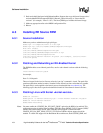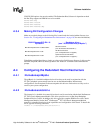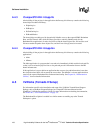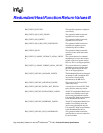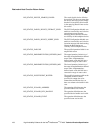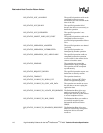
High Availability Software for the Intel
®
NetStructure
TM
ZT 4901 Technical Product Specification 103
Software Installation
Software Installation A
A.1 Linux
The Redundant Host software package in Linux is broken out into two RPM packages. To achieve
full Hot Swap Redundant Host capability, both packages must be installed. The packages can be
installed individually if only specific functionality is required. In order for the Redundant Host
functionality to be enabled properly the Hot Swap Kit for Linux must first be installed. See the
Intel
®
NetStructure
™
Hot Swap Kit for Linux 2.4 Software Manual for installation/setup
instructions.
The Linux kernel, versions 2.4.18 (RedHat 7.2), provide capabilities for dynamically loading and
unloading drivers, allowing dynamic insertion and removal of devices in a computer system
without stopping the system. However, there is no built-in support in the operating system for
dynamic insertion and removal of CompactPCI devices. Additional software, provided within the
Hot Swap Kit for Intel NetStructure Processor Boards, collaborates with the system to provide hot
swap support for CompactPCI. The core of the Redundant Host Software Kit is to provide the
functionality required for Ultra-Quick switchovers with minimal loss of system serviceability.
The rest of this section details the installation and setup procedure for the Redundant Host
Software Kit for Linux.
A.2 Installing the Redundant Host Software Kit
The Redundant Host Software Kit is packaged as an SRPM (Source Red Hat Package Manager)
module:
CompactPCI-RH-1.0-1.src.rpm
This SRPM includes kernel patches, the RHSK drivers and utilities, and an RPM spec file that can
be used to build a binary RPM module.
The RHSK requires that the kernel sources be patched and rebuilt. The RHSK drivers and utilities
depend upon, and are closely matched with, the kernel version against which they were built. For
this reason, it is not practical to distribute a binary RPM that includes both a pre-built kernel and
collection of RHSK drivers and utility binaries.
Instead, this section describes the steps that should be performed at the end-user site to perform the
kernel patching and the RHSK driver and utility recompilation.
The end-user may build a binary RPM that is specific to their hardware environment; the steps
below provide instructions for accomplishing this. This binary RPM simplifies RHSK installation
on other similar hardware (that is, it can be used instead of the SRPM).
The following provides a top-level view of the steps required to install the HSK SRPM, make local
customizations, and produce a binary RPM for installing a site-specific, HSK-enabled Linux
system:
1. Install the SRPM



